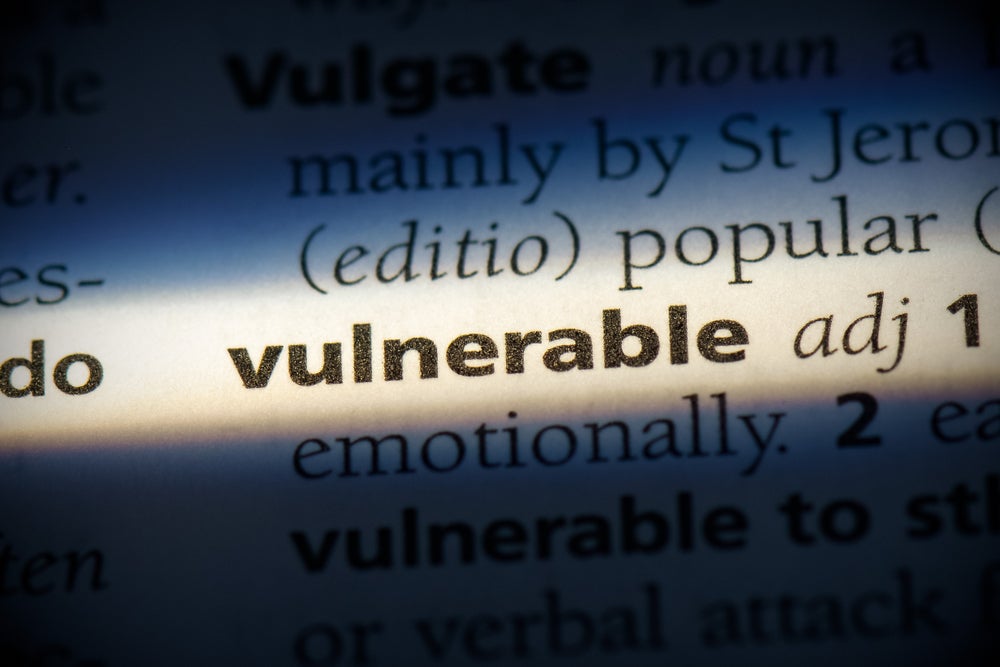
The Motor Finance conference featured a number of panel sessions. One such session saw industry experts discuss how motor finance is developing around the world, and some of the challenges facing companies looking to break into some of the less mature markets
The panel speakers were:
- Chair: Peter Landers, head of consumer and vehicle finance, financial services, Grant Thornton
- Pat Creed, managing director Bank of Ireland Finance
- Ed Paulat, executive vice-president, GM Financial
- Michael Stewart, finance and risk manager, Jaguar Land Rover
- Knut Kroesche, director, international fleet, aftersales and used car, Volkswagen Financial Services AG
Landers: Because the Irish market has come from such a difficult place, Pat [Creed] would you like to talk about how you and the financial sector responded to some of those challenges?
Creed: In November 2007, the recession hit Ireland. All the lenders left the market within a couple of weeks and left the industry bereft of support. We stayed in the market and we were given liquidity and capital which was scarce in the market. We now support 14 of the 28 manufacturers as a captive in the Republic of Ireland. In the early 2000s we would have registered 200,000 new cars a year; in 2010 we registered 57,500 new cars. We have come back from that now, we will register 170,000 new cars this year. The market has grown as a result of PCP. Up to 50% of new car registrations in Ireland today are on PCP.
Considering the expectations of some of your partners and the credit conditions that you are operating in, how were you able to deliver to some of those partners?
Creed: You have to think as a captive, you can’t think as a bank. It’s not about lending money, it is about selling more cars and getting more registrations for them. A challenge for us is that, at the end of March, three of the top four performing manufacturers in Ireland were in our stable. It’s always a dangerous one to manage because you have to be careful as confidentiality and trust is everything and the day you lose that is the day you’re out of the captive business. You have to offer all products.
How well do you really know your competitors?
Access the most comprehensive Company Profiles on the market, powered by GlobalData. Save hours of research. Gain competitive edge.

Thank you!
Your download email will arrive shortly
Not ready to buy yet? Download a free sample
We are confident about the unique quality of our Company Profiles. However, we want you to make the most beneficial decision for your business, so we offer a free sample that you can download by submitting the below form
By GlobalDataIn terms of taking credit risk, whether it would be dealer level or customer level, what did you have to do to be sure you were competitive?
Creed: Learn from the past. I can actually see it happening now; the market is heating again at the moment and some silly things are coming back into it. PCP and the whole residual risk thing in Ireland at the moment is not an issue, but I can see it becoming an issue in the future, particularly if values start to drop. We didn’t have a used car pool in Ireland because of the age, but PCP will create one.
Ed [Paulat], can you speak about some of the key differences you see across the markets you work in, particularly in some of the faster-growing markets?
Paulat: The story on the continent is different to the UK. In the UK there has been the development around PCP. The interesting thing will be what is going to happen as a consequence of Brexit discussions. The appreciation of the pound has very much driven some of the market in the UK because the currency upside was pumped into incentives, artificially fuelling the market even more. The question now, with the pound declining and the EU referendum, is if this is going to continue.
The rest of continental Europe is in a fairly good shape; the big five markets have been rising. We’re getting back into the market as a player and are in the process of building the fundamentals to allow and fuel future business growth. In Germany, for example, we have launched an online bank. This was a great example for digitalisation, and customers liked it so much that we had to reduce interest rates fairly quickly after the launch. I think the clear message is that if you get the technology right, if you get your service offering right, if you get your value proposition to your customer’s right, I think there are many opportunities in the market.
How stringent is the regulatory regime in the UK now versus other markets.
Paulat: I think the rest of Europe is catching up. The UK is at the forefront of regulation. To the British public, what happened in the banking crisis was a severe shock and I think regulators probably said this is never going to happen again. If you talk to people at the EBA, ECB and various other prudential regulators, I think the view is very similar, but probably European law-making has been slower because you have more diverse views to take in. However I think there’s a clear trend that the rest of Europe is catching up fast from a consumer protection perspective.
Michael [Stewart], you have a relationship with a number of partners across a range of markets, including Russia and China. Could you talk a bit about your experiences of those markets?
Stewart: Russia was a key overseas market for JLR and we were seeing decent rates of growth there up until the international fallout in the last 12 months coupled with the oil crash. Effectively, the capital constraints that have been put into that market mean that a lot of lenders have withdrawn. It was quite an interesting market, and quite highly regulated from a retail perspective. The key for us in Russia is to be prepared for the bounce back. The thing about BRIC economies is that they are quite spiky: they stop quite abruptly and they start up quickly.
China is fundamental for JLR, it is a key market simply because that’s the first place we’ve done joint venture manufacturing outside the UK. For China, the regulator is quite interesting: they are quite prescriptive in some ways, but in other ways they do not tell you precisely what to do. It is like the FCA gone mad. They have rules that they don’t tell you about, which will crop up from time to time, and they have quite a high level of oversight but seemingly little influence over the industry.
The consumer regulation is pretty loose, and that’s why the captives have done so well in the marketplace. At the same time the banks there aren’t currently too interested. Going back to the regulation, the shift in the economy to some more service-led economies has basically been endorsed by the regulator.
In countries where they don’t have the same level of infrastructure or oversight, where do you compromise in terms of the model and your expectations?
Stewart: We must have a minimum viable product from the banks. We don’t want to be transactional in our relationship with those banks. We view them as genuine partners and as part of that we recognise some of the risk and reward needs to see compromise. There is a balance that is struck and in the mature markets we do actually grab best practice from those and try to implement them into the faster-moving or less mature overseas markets.
Knut Kroesche, maybe you can talk about Russia and China from your experiences.
Kroesche: We started in China three or four years ago to build up our own entity and serve the market with leasing, full operational leasing, full-service leasing. It seems to be a centrally-ruled country but it’s not. Each and every province has its own regulation, so it’s tough to go there. Then there are rules you know and there are unknown rules that just pop up which you have to react to. Then they decide to change the rules and they do not do that within months or years, but within days and you have to fulfil it, not knowing if it’s 100% or not.
Because of the fragmented nature of that market and its sheer scale what is the approach to distribution from a sales account management perspective?
Kroesche: Large commercial businesses that are big customers from Europe want to be served by us there, so we have key accounts in the main cities. The other thing is if you try to sell through the dealerships, it can be really difficult because they are not that loyal. The large commercial business is with key account management in the cities because they are located in these main areas, but there’s no chance to do that across the country at the same level we have in European countries.
Ed do you have any particular thoughts around consistency and markets from a distribution point of view.
Paulat: China is an interesting one because it’s a market that’s rapidly changing, and jumping over the steps in the evolution where Europe is still stuck.
Because you have a young dynamic population, finance is still in its infancy in some ways. Consumers are not borrowing so much, so I think the Chinese consumer credit market is going to be a bit of a future gold rush. There’s so much untapped potential and I think it’s going to be interesting to see how it’s all going to pan out.
From a credit risk perspective, in some markets because of the environment that you are operating in, there’s a lack of confidence in some instances. How have you adjusted your products for credit risk in those sectors?
Creed: We haven’t adjusted an awful lot. The arrival of PCP was probably the biggest innovation in Ireland because all of a sudden you were bringing in the residual risk piece.
The challenge now is getting the dealers to use it. Unfortunately they are not as technologically friendly as you would like them to be, especially the small family-owned dealers. The larger groups are no problem because they still have their F&I managers. During the recession lots of F&I managers lost their jobs or had to go back to selling.
The challenge of technology is that people do not come into a garage anymore wondering what they are going to buy. An Opel dealer was telling me recently in Dublin that his competition is not the Toyota or the Volkswagen dealer, it’s actually his next Opel dealer, because the customers have already made their decisions.
Would you say loan-to-values are now equivalent of what they were pre-crisis
Creed: No, I would say they are still below it, I think we are still on the conservative end. The last run of PCP reviews was at the end of December for January, and most of the manufacturers moved their percentages up because they felt that there was probably too much equity in the cars that were coming back off three-year PCPs. The danger from a banking perspective is to keep some level of equity in there so that you don’t get to a stage where there’s no equity should the RV start to drop.
Stewart: I would agree, we’re very keen actually to make sure there’s a level of equity when the customer comes back, because their perception of the brand when they return the vehicle and there’s no equity in it, is pretty negative. Of course they are going online; they are looking at the valuation.
I see connected cars as being a real enabler from a credit risk perspective because we have live feeds telling us the mileage. I can see that developing and in the future becoming more prevalent.
Paulat: One more comment on the telematics: it is a fantastic opportunity for tailoring insurance products to driver behaviour, but also, RV risk. If you have an extremely careful driver who takes good care of the vehicle, not accelerating or braking hard, it’s going to be worth more than a car that has been abused. For us, that’s also the next thing we are looking at from how we can include that into our RV risk forecasting.
Kroesche: The trend from ownership to usership is going on in fleet. On the customer side, fleet and travel are moving together, more or less. I have recent examples of big customers where either the fleet or travel manager left, and the other one just took over. In the future we don’t talk about just fleet, we talk about mobility management.
This helps us with the telematics inside the car: we not only have the customer journey but we also have the car’s life cycle management; we know about the condition of the car which helps us to do some aftersales package for the used cars. The other thing is we have been told by customers that new employees don’t even ask for a car; they want just a mobility budget. That means someone has to own this car, who is that? Is that still the customer or us?







